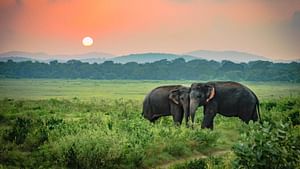Hortan Plains Tour From Kandy
Tripadvisor (Guide) Reviews (36) |
Rating
(5)
Kandy, Sri Lanka
| Number of Travellers | Price Per Person (USD) |
|---|---|
| 1 | 196 |
| 2+ | 146 |
| 4+ | 95 |
| 8+ | 75 |
Part of our revenue from this experience
will go to a charity in the region
will go to a charity in the region
About
Your Local Pal
Sri Lanka
Featured Experiences

$186 / person
Trekking Knuckles Mountains
Duration: 9 hours

$399 / person
CEYLON CULTURAL TOUR - 4N/5D
Duration: 5 days

$491 / person
03 Day Tour From Colombo
Duration: 3 days

$633 / person
Amazing Sri Lanka - 6N/7D
Duration: 1 week







